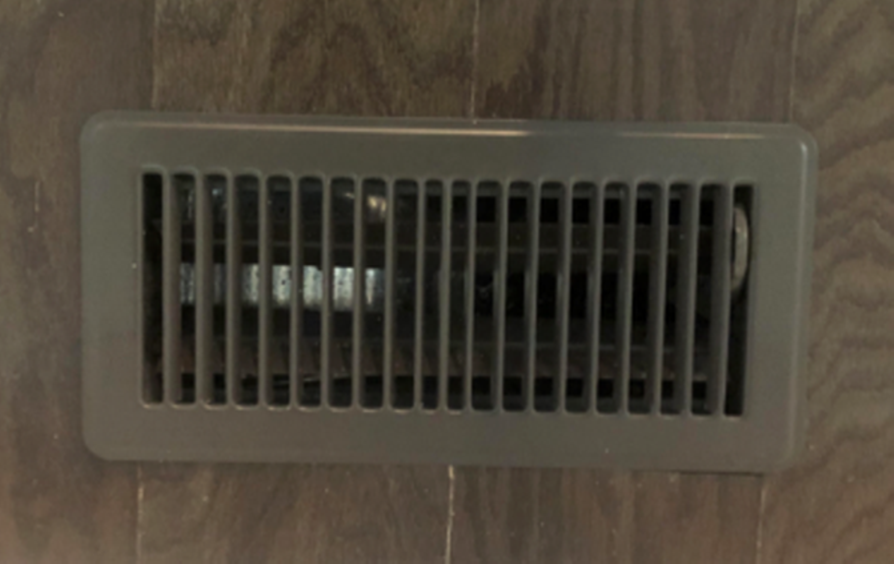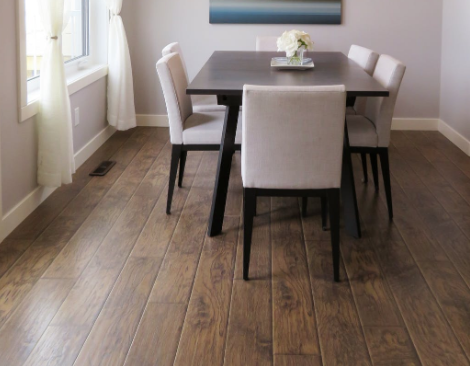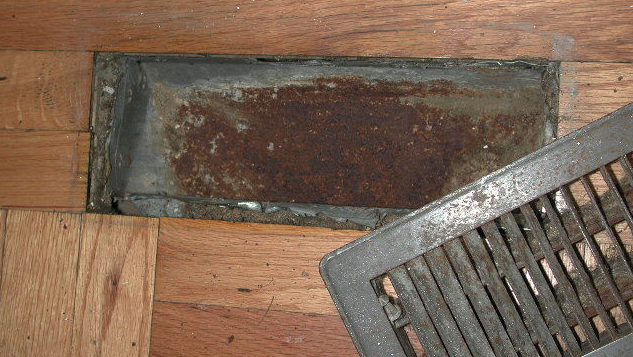Homeowners and renters both make the mistake of blocking their heating and cooling vents without thinking twice about it. What they don’t realize is that blocking even just a few vents can cause very real problems. Blocking vents will not only raise your heating or cooling bills, but it could damage your furniture or HVAC.
Fortunately, it’s a simple problem to prevent and if you’re blocking vents in your home today you can resolve the issue to make your home more efficient once again by using Air Vent diverters or deflectors. Below we look at the potential damage blocked air vents can cause, as well as possible product solutions if you can’t move all your furniture away from your vents.

Problems Caused by Blocked Vents:
Obstructed air vents can cause very real problems in your home. They can reduce your home’s energy efficiency and even cause damage to furniture or your heating equipment itself. Below is an overview of many of those issues.
1. Blocked Vents Create Hot and Cold Spots:
Even before considering how blocking the air vents in your home could be costing you money or doing damage to your property, it’s important to think about how you’re affecting the comfort of your home. Your home’s HVAC unit has been carefully balanced to deliver even heating or cooling to keep your home comfortable throughout the seasons. When air vents are obstructed because of furniture, blankets or other objects you’re messing with that careful balance. Stopping up some of your vents will lead to cold or hot spots in your home and create a less even environment overall.
Imagine it’s the middle of winter and you blocked one of the two vents going to your bedroom. Not only is your room going to be colder than normal, but other areas of your home will likely be hotter than normal as well. Instead of even temperatures, you’ll end up with hot and cold sections in your home and nowhere will be comfortable like it’s supposed to be.
2. How you Could be Damaging Your Furniture?
Blocking an air vent with wooden or fabric-covered furniture leads to rot and mold many times. That’s because vent air is often moist and that damp air is left in contact with your furniture when it’s sitting over a vent. As the moist air continually touches the wood or fabric it leads to rot and mold growth that can do serious damage to your furniture.
A best-practice to follow when placing furniture in rooms around your home is to leave 10-18 inches of space around each air vent for proper ventilation. Try to think of layouts that keep the air vents free and open and you’ll enjoy more even temperatures throughout your house. Maintain that space and you shouldn’t have any issues with blocked airflow, mold or rot.
3. Blocked Air Vents Can Cost You More on Utility Bills:
No matter if you are heating or cooling your home, blocking the air vents can make your HVAC system work harder to maintain your home’s temperature. In the winter it will have to run longer to get your home to the proper temperature. In the summer your central air system will have to work overtime to cool your house down. That’s because you’re restricting the natural airflow your system was designed for.

By blocking some of the vents in your home you’re also creating pressure that can reduce the overall efficiency of your heating or cooling system.
Those changes can be disastrous for your utility bill. By blocking just a vent or two in your home you could unknowingly be raising the cost of running your system and costing yourself hundreds or even thousands of dollars in lost efficiency annually.
4. You Could Damage Your Furnace or Central Air System
Blocking vents in your home isn’t just bad for energy efficiency reasons, it can also do real damage to your heating or cooling system. A blocked furnace could become too hot and you could crack your home’s heat exchanger as a result. When you run your forced-air heating system air circulates through your home again and again.

To circulate properly the air must exit all the vents and then go back to the heater through the cold air return.
When vents are blocked air circulation slows down and that causes your furnace’s heat exchanger to get hotter than normal. When that happens there is a risk that it will crack and require replacement. That’s a seriously expensive repair and a much bigger concern than a raised utility bill because your furnace won’t function at all until it’s repaired.
A similar issue can occur when running a central air system with blocked vents. Slower moving air will cause the condenser to get colder than it’s meant to and sometimes turn into a block of ice. If your unit’s condenser coils cold to freeze and require replacement, which is also a very expensive repair task. No matter what time of year it is, covering your home’s air vents is a bad idea that can cost you money all while making your home less comfortable in the process. Fortunately, there’s a simple fix for this issue even if you can’t avoid blocking all the vents in your home. Consider getting an air vent diverter to resolve the problem.
What is an Air Vent Diverter/Deflector?
An air vent diverter is a simple plastic curved device that installs over top of an air vent with a pair of magnets. The diverter goes over top of the vent and redirects the air to head in a different direction. The diverters are affordable and simple to use, and they will enable you to put couches, beds and other raised furniture items over vents without cutting off the flow of air completely.
Many vent diverters are designed to contract and expand to fit multiple vent sizes, making them simple to install on vents around your home. These affordable devices are a good upgrade to obstructed vents in your home and can be a more convenient solution than rearranging your furniture. There are many different diverters available for sale today though, so be sure you get a product that fits your vents and allows air to move through unrestricted.
Using Air Vent Deflectors:
To make use of an air vent deflector or diverter purchase an option that’s the same width as your vent is or get an adjustable product that will fit the width you need. Install the diverter by placing it over top of the vent and locking it into position with the magnets. Be sure to face the outlet from the deflector the direction you want the air to flow, preferably toward the center of the room.
Position your furniture to allow pathways for your vent air to flow and set up your diverters carefully and you can achieve reliable air flow throughout your home.
It’s easy to restrict your home’s HVAC system without even realizing it. To maximize your home’s heating and cooling efficiency look around and ensure all your vents are flowing freely. Move furniture where necessary to unblock vents, but also consider using vent diverters to keep air flowing. Between these two measures you can help your home attain more even temperatures and improve the efficiency of your HVAC system to reduce your energy costs.
